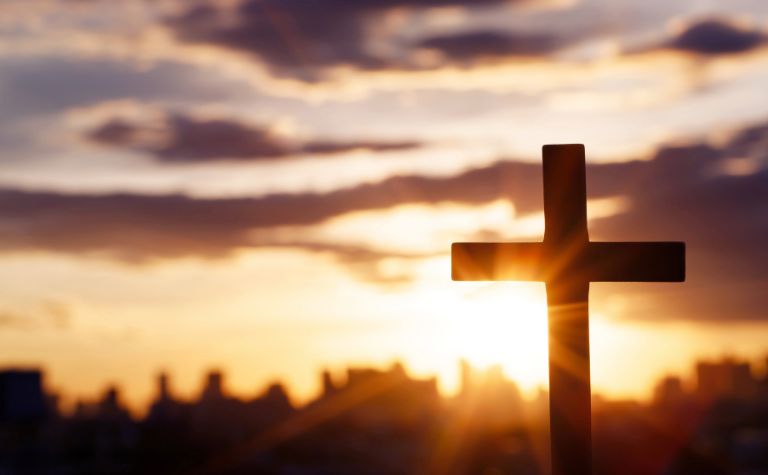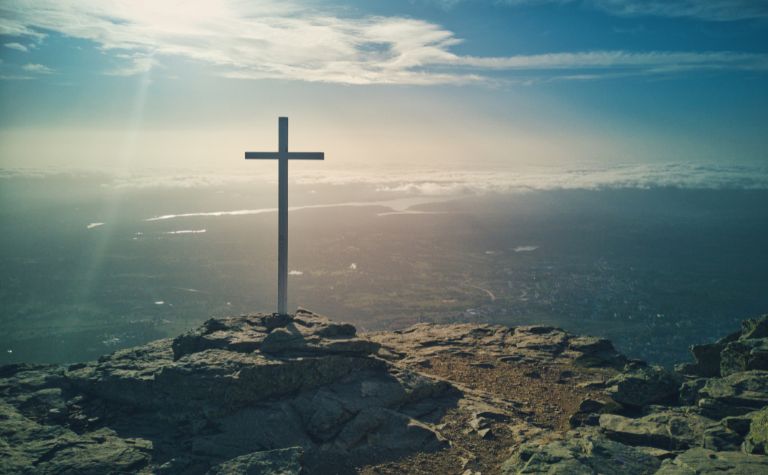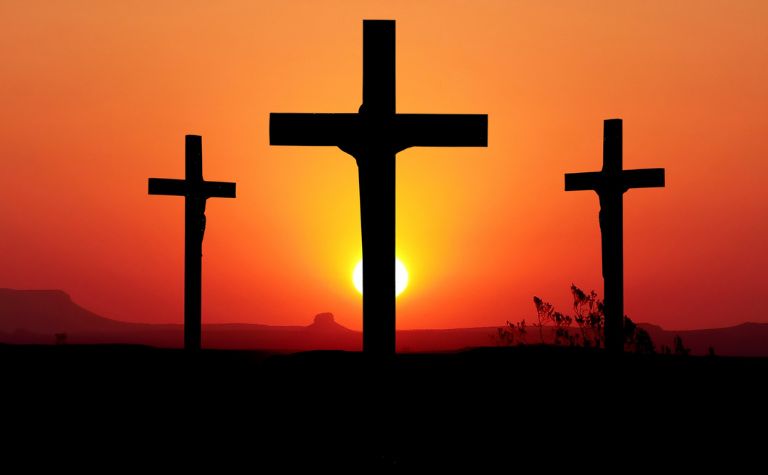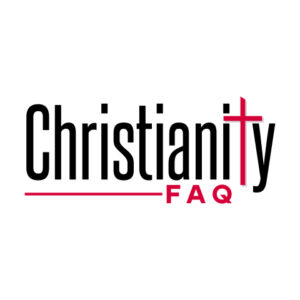Understanding the differences between Christianity and LaVeyan Satanism educates people about the beliefs, values, and histories of these two belief systems.
It also deepens comprehension of cultural nuances, revealing how religious philosophies shape societal values and traditions across large and small communities.
Christianity believes in one God, who is a Trinity, and salvation through the work and person of Jesus Christ, emphasizing sin and redemption with an eternal afterlife.
LaVeyan Satanism views Satan as a symbol, not a deity, emphasizing individualism and rejecting traditional morality. It focuses on the present, dismissing an afterlife.
The following comparison charts and concise summaries shed more light and provide more depth on the differences between Christianity and LaVeyan Satanism.

Christianity and Satanism: An Overview of Their Differences
“Christianity” derives from the Greek “Christos,” meaning “anointed one,” referencing Jesus Christ, with “-ianity” indicating a belief system.
“LaVeyan Satanism” combines the surname of its founder, Anton LaVey, with “Satanism,” denoting a philosophy centered around the symbol of Satan, rather than traditional devil worship.
See Chart 2 to compare Leveyan Satanism with traditional devil worship.
| 1 | Christianity | LaVeyan Satanism |
|---|---|---|
| Name | Christianity | LaVeyan Satanism |
| Size | Approximately 2.3 billion adherents | Estimated tens of thousands |
| Date Started | Around 1st century AD | 1966 |
| Founder | Jesus Christ | Anton LaVey |
| Key Beliefs | Belief in one God (Trinity: Father, Son, Holy Spirit), salvation through faith in Jesus Christ, the resurrection of Jesus Christ | Atheistic philosophy emphasizing individualism, Satan as a symbol of human nature and freedom, not a deity, rejection of traditional religious morality |
| Key Practices | Prayer, worship services, reading the Bible, baptism, communion (Eucharist) | Rituals for personal empowerment, observance of holidays like Walpurgisnacht and Halloween, use of symbolism and ritual tools |
| Divisions | Roman Catholicism, Eastern Orthodoxy, Protestantism | Mostly centralized, but there are offshoots and individual interpretations |
| Central Location | Vatican City (Catholicism) Various locations for other denominations | Church of Satan based in the U.S., but no central “holy” location |
| Sacred Texts | The Bible (Old and New Testaments) | The Satanic Bible and other writings by Anton LaVey |
The Satanic Bible outlines the philosophy and rituals of this atheistic belief system, emphasizing individualism, self-indulgence, and personal empowerment. Satan is symbolized as human nature, not a deity to be worshipped.
Comparing LaVeyan Satanism with Traditional Devil Worship
| 2 | LaVeyan Satanism | Devil Worship |
|---|---|---|
| Belief in Satan | Satan is a symbol of human nature, freedom, and rebellion; not a deity | Satan is often believed to be a real, supernatural entity to be worshipped or venerated |
| Nature of Practices | Rituals for personal empowerment and theatrical expression; atheistic in nature | Rituals and ceremonies to venerate or appease Satan or other demonic entities |
| Sacred Texts | The Satanic Bible and other writings by Anton LaVey | Varies; may include grimoires or other occult texts, but no universally recognized scripture |
| Moral Code | Eleven Satanic Rules of the Earth, Nine Satanic Statements; emphasis on self-interest and personal responsibility | Varies widely; may involve pacts, invocations, or other forms of commitment to Satan |
| View on Christianity | Rejects Christian morality and dogma but does not worship the Christian concept of Satan | Often seen as a direct inversion or opposition to Christianity, embracing what it condemns |
| Origin | Founded by Anton LaVey in 1966 | No clear origin; various forms have existed throughout history in different cultures |
| Central Location or Organization | Church of Satan | No centralized organization; practices can be highly individualistic or part of small, secretive groups |
| Purpose of Rituals | Symbolic, to release emotional energy or reinforce personal goals | To invoke, communicate with, or venerate demonic entities |
| View on Afterlife | No belief in an afterlife; focus on the here and now | Varies; some may believe in rewards from Satan in the afterlife, while others may not have a defined belief |
The Church of Satan is an atheistic organization, viewing Satan as a symbol of personal freedom and individualism. The church promotes self-indulgence, critical thinking, and personal empowerment, rejecting traditional religious beliefs and practices.

Comparing Christian and Satanic Beliefs
The Trinity in Christianity is the belief that God exists as three persons in one essence: the Father, the Son (Jesus Christ), and the Holy Spirit. Each person is distinct yet fully God.
| 3 | Christian Beliefs | LaVeyan Satanism Beliefs |
|---|---|---|
| God or gods | One God, existing in three persons (Trinity): Father, Son (Jesus Christ), and Holy Spirit | No deities; Satan is a symbol of human nature and freedom, not a god |
| The universe | Created by God; has a purpose and will be redeemed in the end times | Neutral and indifferent; there’s no inherent purpose or moral order |
| Ultimate reality | God is the ultimate reality; eternal, omnipotent, omniscient, and omnipresent | The self and the observable universe; reality is what can be perceived and understood |
| Human beings | Created in the image of God; inherently sinful but redeemable | Humans are animals with desires and instincts; there’s no inherent sin or guilt |
| The problem with the world | Sin, leading to suffering, injustice, and separation from God | Social constructs and religious dogmas that suppress human nature and individualism |
| The solution to the problem | Salvation through faith in Jesus Christ; repentance and forgiveness of sins | Embracing one’s true nature, rejecting external moralities, and personal empowerment |
| The afterlife | Heaven (eternal life with God) for the righteous; Hell (eternal separation from God) for the unrighteous | No belief in an afterlife; focus on the here and now |

The Practices of Christianity and Satanism
| 4 | Christian Practices | LaVeyan Satanism Practices |
|---|---|---|
| Prayer/Worship | Prayer to God; regular worship services in churches | Rituals for personal empowerment, not necessarily to a deity |
| Reading Sacred Texts | Reading and studying the Bible (Old and New Testaments) | Studying The Satanic Bible and other writings by Anton LaVey |
| Rituals | Baptism, Communion (Eucharist), Confirmation, Marriage, Anointing of the Sick | Rituals like the “Infernal Names,” “Invocation of the Infernal Names,” and other symbolic ceremonies |
| Moral and Ethical Conduct | Following the Ten Commandments and Jesus’ teachings; emphasis on love, forgiveness, and charity | Following the Eleven Satanic Rules of the Earth and the Nine Satanic Statements; emphasis on self-interest and responsibility |
| Festivals and Celebrations | Christmas, Easter, Pentecost, and other Christian holidays | Birthdays are the most important holiday; other observances include Walpurgisnacht and Halloween |
| Symbols | Cross, fish, dove, bread and wine | Inverted pentagram, Baphomet, inverted cross |
In LaVeyan Satanism, the inverted cross symbolizes opposition to Christian theology and tradition. It’s used to challenge religious beliefs and promote individualism. The inversion represents a rejection of Christian values in favor of satanic principles of self-indulgence and personal freedom.
10 Key Events in Christian and Satanism’s History
| 5 | Christian Events | LaVeyan Satanism Events |
|---|---|---|
| 1. | Birth of Jesus Christ (circa 4-6 BC) | Anton LaVey founds the Church of Satan (1966) |
| 2. | Crucifixion and Resurrection of Jesus Christ (circa 30-33 AD) | Publication of The Satanic Bible (1969) |
| 3. | Conversion of Paul the Apostle (circa 33-36 AD) | Establishment of the First Satanic Church by Karla LaVey (1999) |
| 4. | Council of Nicaea (325 AD) | Creation of the Eleven Satanic Rules of the Earth (1967) |
| 5. | Conversion of Emperor Constantine (312 AD) | Creation of the Nine Satanic Statements (1967) |
| 6. | Great Schism (1054 AD) | LaVey’s death and leadership transition to Peter H. Gilmore (1997) |
| 7. | Crusades (1096-1291 AD) | Publication of The Satanic Rituals (1972) |
| 8. | Protestant Reformation (1517 AD) | The Satanic Panic of the 1980s and 1990s |
| 9. | Council of Trent (1545-1563 AD) | Publication of The Satanic Witch (1971) |
| 10. | Second Vatican Council (1962-1965 AD) | Establishment of the Temple of Set by Michael A. Aquino (1975) |
The “Satanic Panic” refers to a widespread fear during the 1980s and 1990s, primarily in the U.S., where many believed in the existence of satanic ritual abuse.
Related Questions
Christianity encompasses a wide range of beliefs and practices. Within this broad spectrum, two major theological perspectives have emerged: Conservative Christianity and Progressive Christianity....
Exploring the world's religions using the comparison charts below offers fascinating insights into cultures and beliefs. It opens doors to understanding human history, values, and...
